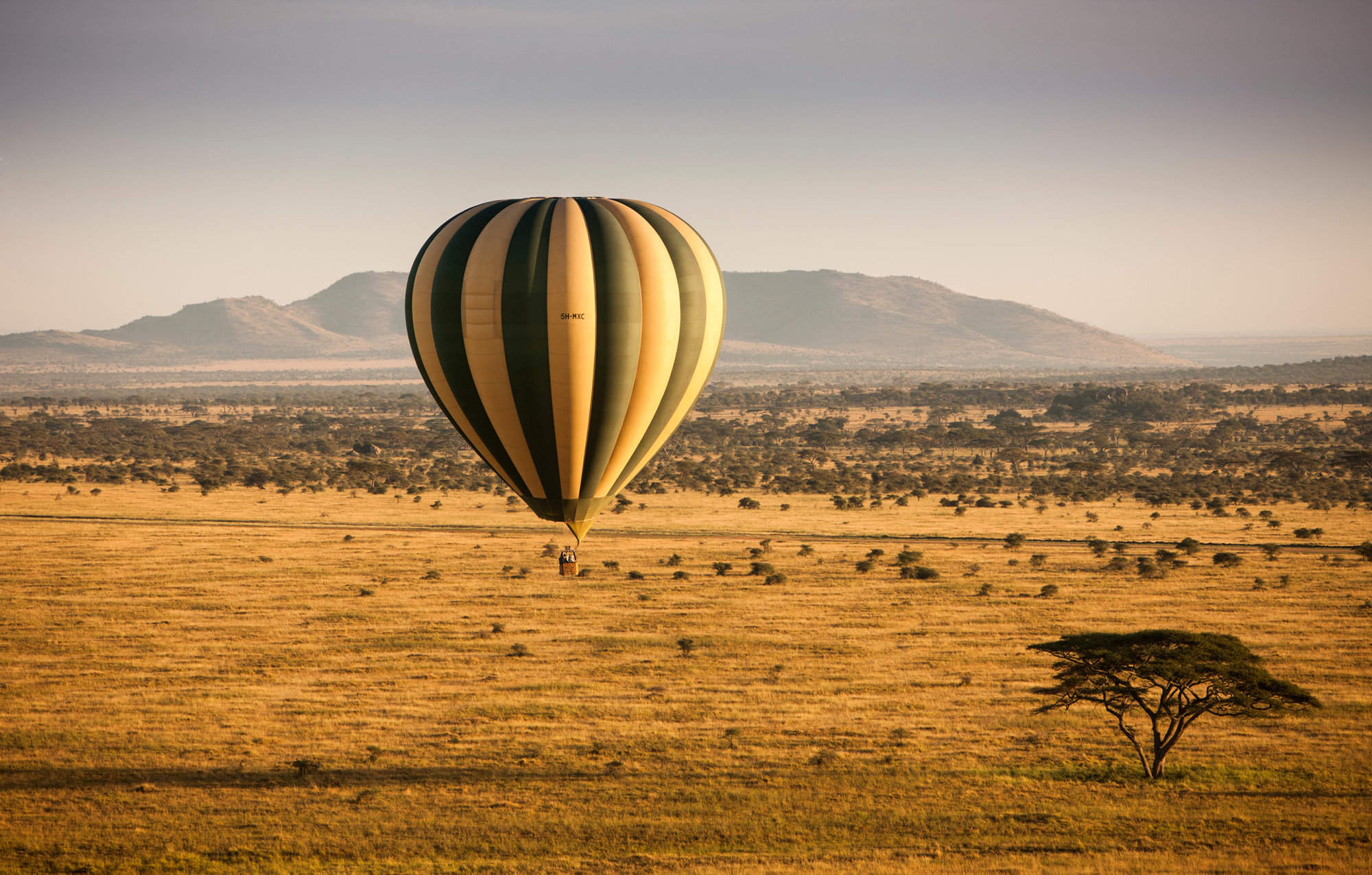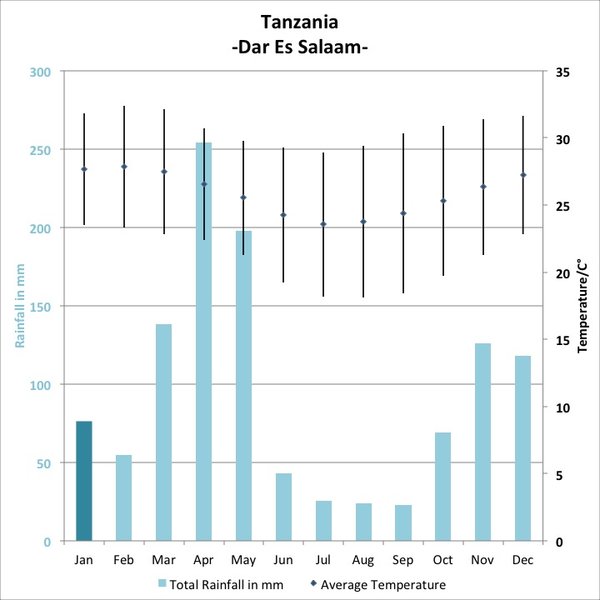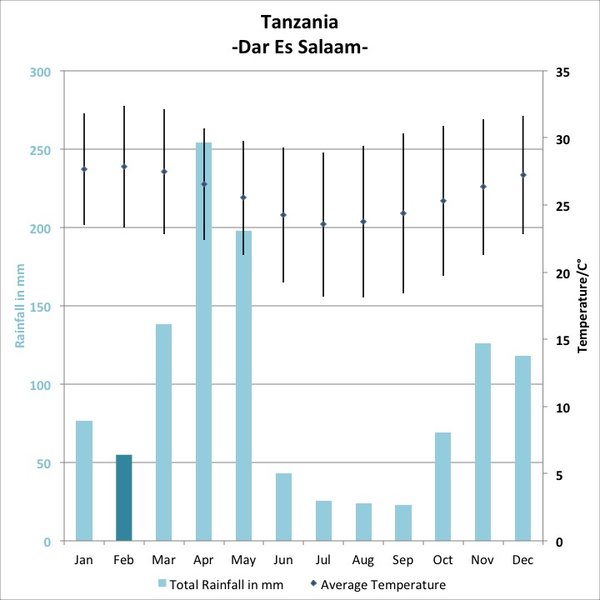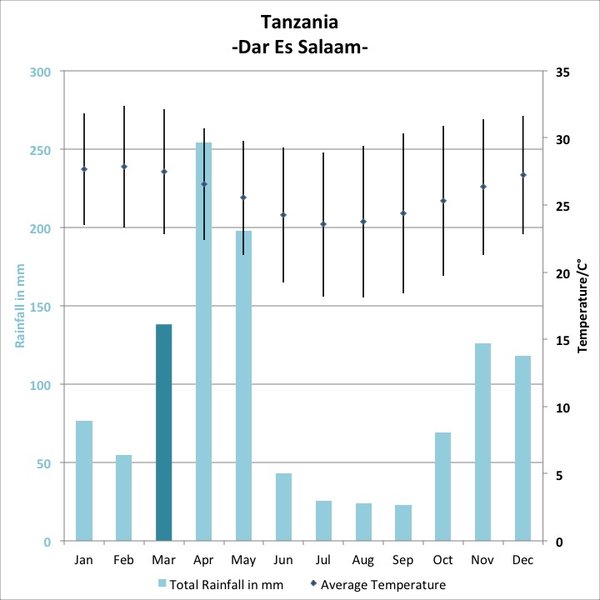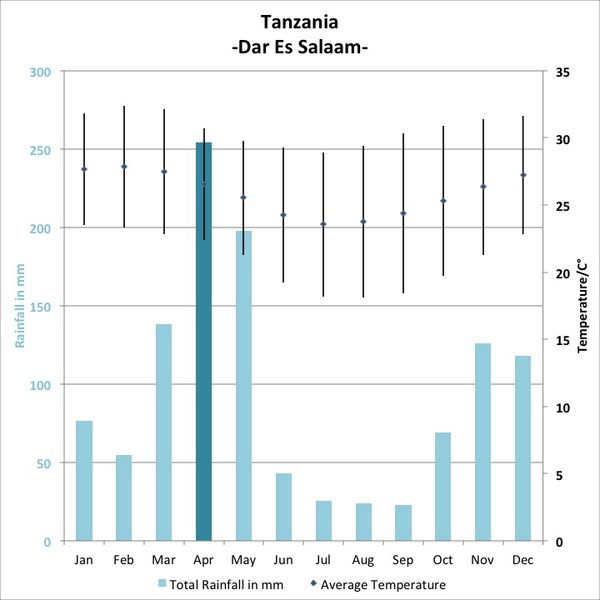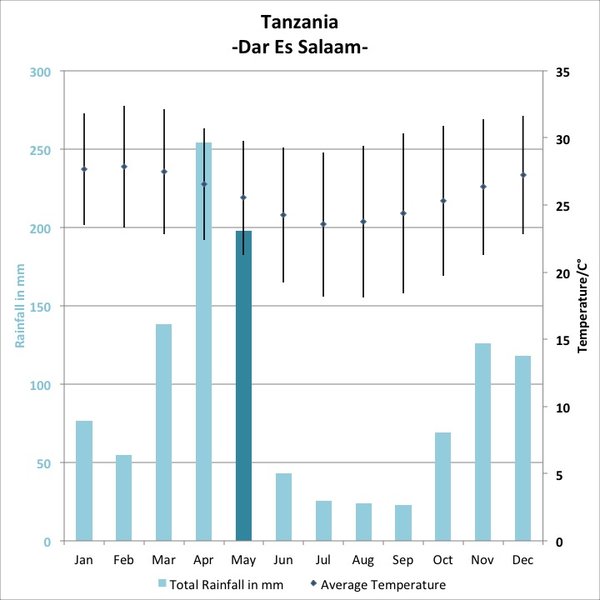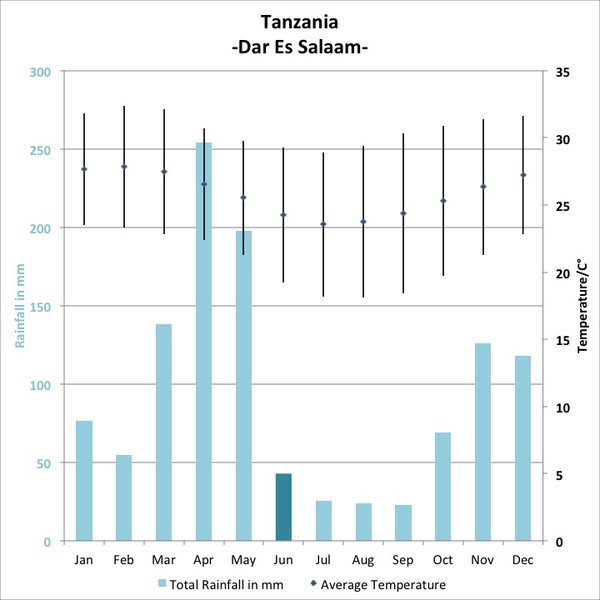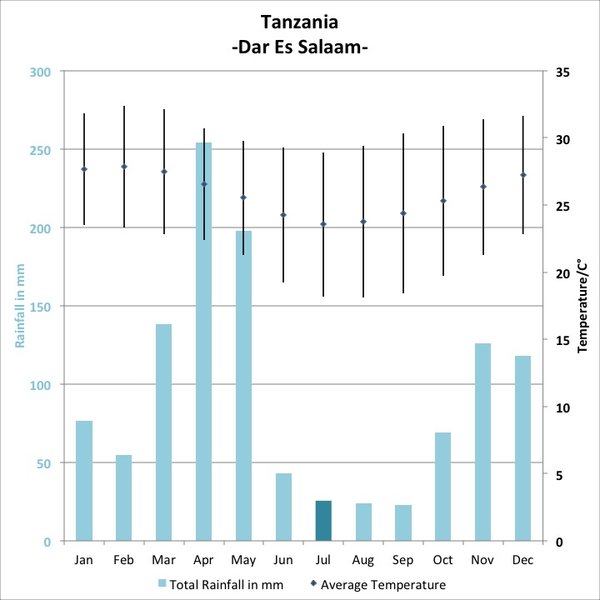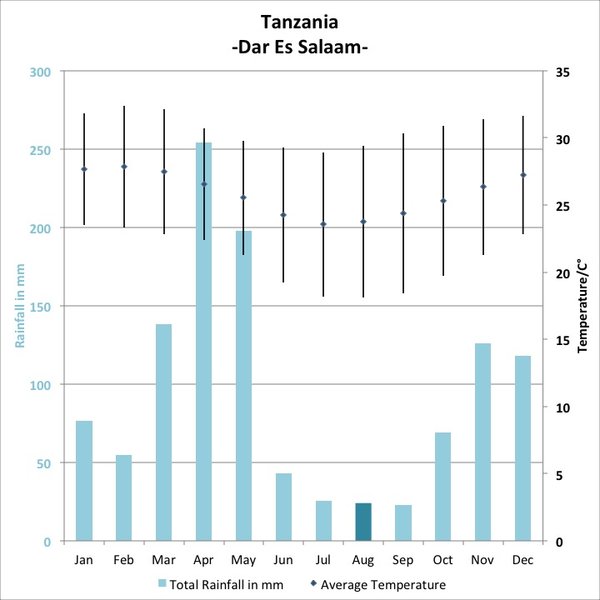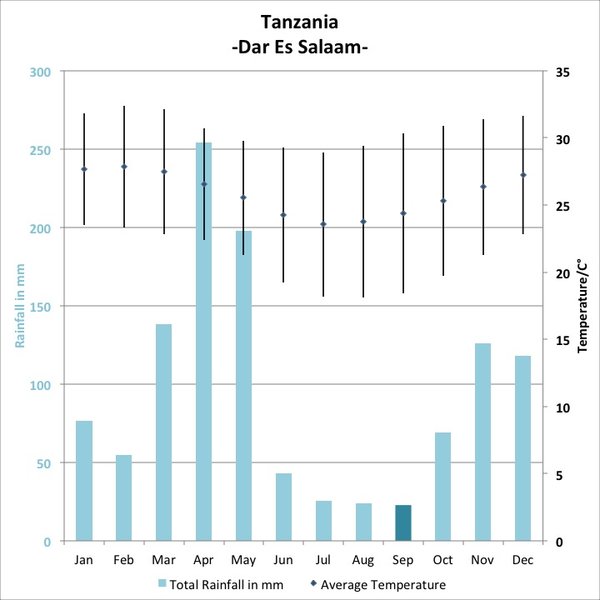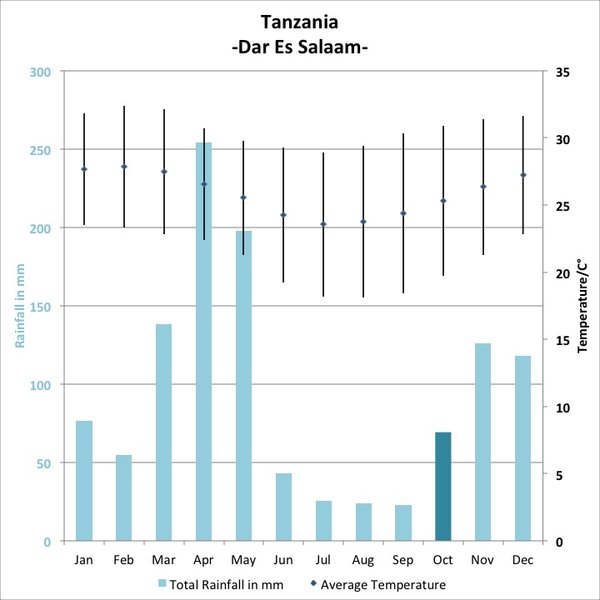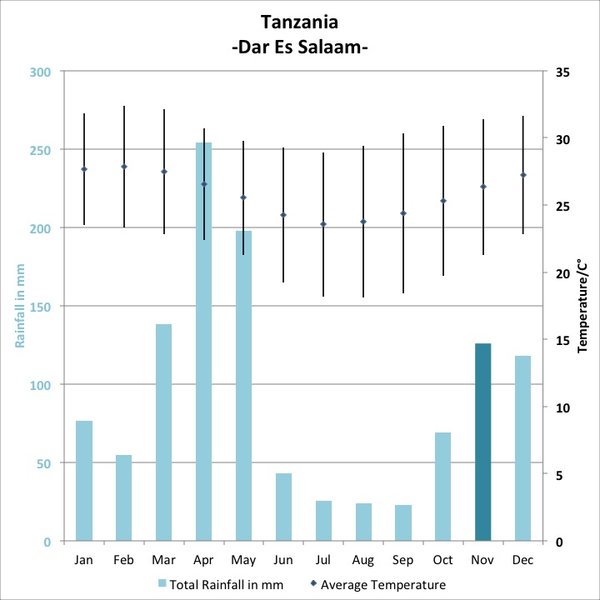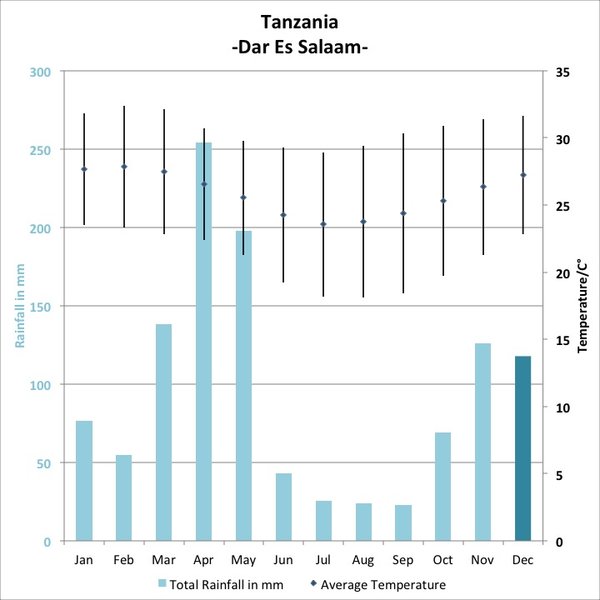January: the start of the ‘short dry season’.
February: the hottest month, and relatively dry, just before the main rains start.
March: the main and long wet season starts.
April: the wettest month of the year with a high humidity level.
May: very rainy month; afternoon downpours are to be expected.
June: the long dry seasons begins; weather is usually sunny with clear skies.
July: the landscape is beautiful green and lush; Tanzania’s best time.
August: lovely warm days, cooler nights and normally very little rain.
September: dry and lovely, similar to July and August.
October: warm and clear month, with rain possible at the end of the month.
November: start of the 'short rainy season'.
December: temperatures gradually edge up during the second month of the ‘short rains’.

